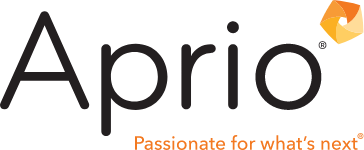Inspector Gadget: How Mobile Inspections Will Save You Time and Money
September 8, 2017
Inspections can cost a lot of time and money, whether you’re performing them to keep residents safe, maintain unit condition or simply position yourself for continual funding. Plus, your housing authority must complete all work orders stemming from property inspections by funders from the state, Real Estate Assessment Center, private banks and equity firms. Employees on-site for the inspection are often responsible for re-entering information into the corresponding HUD records system.
Are your inspectors spending countless billable hours performing post-inspection data entry? At mid-size housing authorities, these initiatives can account for thousands of wasted hours (and dollars). With mobile technology, you’ll reduce your need for a large inspection team and can reallocate resources accordingly.
Less Pain, More Gain
Think of it this way: A typical employee works 2,080 hours a year. If you have 5,000 units that need Housing Quality Standards inspections each year, and your inspector spends one to three hours per week prepping documents to take into the field, that’s 50 to 150 hours spent on paperwork. After the inspection, he must drive back to the office and manually re-enter data into the housing software system. If that takes three minutes per inspection, you just lost another 250 hours a year. Of course, creating work orders after inspections adds even more time.
Mobile inspection apps let your teams leverage one-time data entry during the inspection itself. They will even be able to create work orders while in the unit. This saves time for the inspector and speeds up any associated maintenance and customer service processes. After all, relevant unit information is immediately available in the corresponding database. This technology lets you reduce staff or assign some inspectors to more high-value work.
Mobile Inspections: Select and Test
Once you’re ready to adopt the latest inspection technology, consider the options. If you use a housing software vendor already, ask if a mobile app for inspections is available. Ideally, your mobile app and main housing software will connect seamlessly. When choosing a vendor, investigate the specific inspection templates offered. If you’re conducting an HQS inspection, for example, ask if there’s already an associated template in place.
Next, establish a detailed implementation plan. Ensure your technology and inspection teams understand all requirements so they can work together to develop a testing script. This will allow your team to determine whether a particular app will meet your needs. If your agency works in a large coverage area that often has dead-service zones, your testing script should include those areas. When testing, determine whether you want your work order system to be tied into this inspection software.
After testing, choose a go-live date so everyone can prepare to switch to the new system. Once the project goes live, your technology team should monitor the data coming in from the inspections to make sure everything is functioning properly. As a best practice, monitor this incoming data for at least a few weeks.
Are you taking advantage of the latest mobile inspections technology at your PHA? If not, act now to get the most out of your resources, time and money.
Stay informed with Aprio.
Get industry news and leading insights delivered straight to your inbox.
